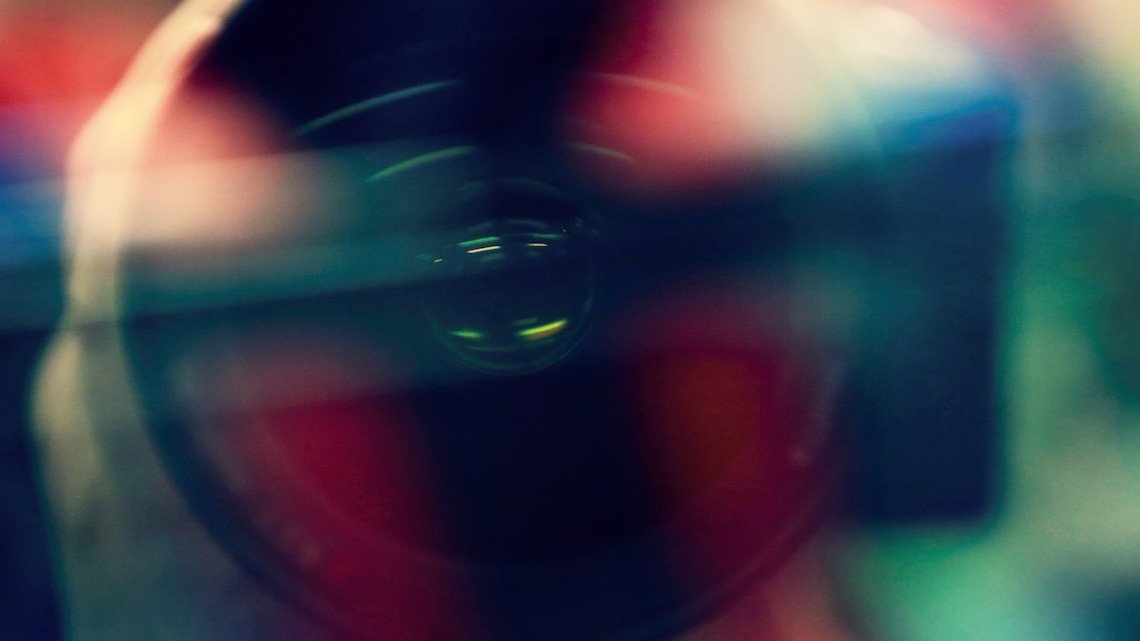The IFC Centre in Greenwich Village, downtown Manhattan doesn’t look like much from the outside. It doesn’t have fancy lights or monumental posters advertising its latest releases. Inside, there isn’t a large brand-name heavy concession stand but rather a small counter with popcorn at the back and herbal tea stacked up in boxes along the side wall. There aren’t crowds of hungry movie-goers waiting in line to buy tickets, nor are there self-select screens, just a man in a box outside the cinema sells tickets the old fashioned way. This is an art house cinema, an oldy-worldy pre-corporation cinema showing independent, foreign and short films, classic films and cult favourites at midnight on a Friday and Saturday. It was 2pm on a Tuesday afternoon when I went down to the IFC and waited with my Darjeeling tea for the screen to darken, and the documentary to begin.
Life, Animated tells the equally heartbreaking and heartwarming story of Owen Suskind, a young man of my age who developed autism as a child. It was only through the unlikely medium of Disney animated films that Owen began to reclaim his voice and learn to navigate his way through the emotional and physical trials of life, using the messages embedded in Disney films to decode the world around him. Based on Ron Suskind’s book and directed by Roger Ross Williams, the documentary is something of a bildungsroman, an emotional journey through Owen’s journey into adult life and a testament of hope for those with debilitating diseases that there are unsuspected paths towards recovery.
Leaving the theatre, I had to check my eyes in the bathroom for signs of smudge from where I’d been crying. The power of the documentary had exhausted me emotionally and as I sat in a coffee shop just around the corner I began to wonder what it was about documentary that had helped its resurgence in the 21st century. In Britain, the 1930s saw the heyday of the documentary. Night Mail (1936) is perhaps the most well known with its infamous W.H. Auden beating poem compellingly narrating the shots of the locomotive snaking through Scottish countryside as it arrives at its destination; “this is the night mail crossing the border, Bringing the cheque and the postal order.” Since then, the documentary film had been largely the preserve of daytime television, expose programmes or war documentaries. Documentary was informative, it had an educational purpose and it didn’t engage in its audiences the same kinds of emotional responses as feature films.
So why in recent years have documentaries become once again such a talking point, such a focus of our media-orientated minds? And why, given that so many of us watch and talk about them, are they still relegated to arthouse cinemas and online streaming services rather than getting broad theatrical releases?
Since the dawn of the 21st century, our viewing habits have changed enormously. Families no longer huddle round the television on a Saturday night to watch the biggest show, we no longer have to wait for a new instalment of a series every week, we don’t have to worry about missing a show any more. The internet has had a profound impact on the way we consume entertainment. Most of the major channels now have their own playback options, many series come out all at once on the major video streaming sites, and we are able to pause, rewind and pick up where we left off to fit entertainment in around our daily lives. Perhaps the most well known site contributing to this phenomena of as-you-need entertainment is Netflix.
Netflix has been a huge contributor to the rise of the popular documentary. Cowspiracy (2014), produced and directed by Keegan Kuhn and Kip Andersen, illuminated the devastating impact of agricultural farming on the environment. A testament to crowdfunding, the documentary has gained a huge following and intensified debate on the global environmental crisis. This brings us to the giant that is social media. 245,522 people currently ‘like’ conspiracy on Facebook. In February of this year, Facebook debunked the theory of ‘six degrees of separation’ and instead replaced it with 3.57. Facebook has 1.4 billion active users with most people averaging around 155 friends, which seems a little low to me, so if every person who ‘likes’ conspiracy is regularly ‘liking’ its posts and photos or even just advertising that they ‘like’ it, how many people does the name Cowspiracy reach? The answer is a lot. Head over to Instagram, the other big name in social media, and in not too long you’ll find memes referencing the documentary. Most of these refer to the inability of viewers to give up meat despite their guilt having watched the film, as many of my own friends have commented themselves. Nonetheless, people are sharing, liking and crucially talking about the ideas brought up in the documentary.

So why do people like documentaries so much? The first answer is because they are being made about things that people care about, rather than having a puritanically informative or educational role. Amy (2015) documented the rise and tragic fall of jazz singer Amy Winehouse. Call it a cynical attempt to capitalise upon the death of one of Britain’s most beloved singers, but the documentary allowed fans into Amy’s life in a way they hadn’t been before. We saw her rise to fame, her home footage of life with Blake Fielder-Civil, her personal reaction to her own success, and her sad fall from health. Amy was so loved because it allowed us to get close to someone we only knew through the eyes of the media which hounded her.
Yet we don’t just want to get close to people we like, Louis Theroux has forged a career out of making documentaries about people the audience is not necessarily meant to like. Theroux’s unique style has gained him respect as the journalist who asks the questions you want to know. Spending time with his interviewees, and documenting their daily lives, he gets to know the people behind some of the most infamous titles and tags such as the Westboro Baptist Church, neo-Nazis, paedophiles and hardened prisoners. Whilst he doesn’t only specialise in making documentaries based around the weird and the abnormal, Theroux has become loved for his ability to shine a spotlight on parts of, largely American, society which most of us simply ignore or pretend isn’t happening.
It’s not only people that we’ve become more interested in either. Some of the most successful documentary series of the last 20 years have been based around the animal kingdom. David Attenborough has of course been a documentarian of wildlife for many years, but it has been since the year 2000 that he has become one of the most beloved national treasures in British television. Though not all Attenborough, Planet Earth (2006), Life (2009), Africa (2013), The Hunt (2015) and my personal favourite, Human Planet (2011), all these names are beloved as some of the best documentaries British television has offered up, and all are about real phenomena and real events.
Perhaps it’s that we’ve grown sick of fantastical stories about people and places to whom we can’t relate, maybe indicated by the dwindling success of the DC and Marvel studios in the last couple of years, although this seems unlikely given the health of the film industry. Perhaps it has something to do with the ability of documentary filmmakers to use technologies which rival the special effects of big-budget films thus making our documentaries just as riveting and high-tech. Perhaps our minds have been so bombarded by current affairs online, on social media and by 24 hour news that we are more switched on to the real world than ever before, and more of us are more aware of the real issues the world faces. The power to enforce change in such a climate through the medium of documentary film has just recently been proven by the overturning of Brendan Dassey’s murder conviction, the original conviction being the subject of Netflix’s hugely successful Making a Murderer (2015).
In Rotten Tomatoes’ list of ‘Top 100 Documentary Movies’, it is unavoidable to notice that the majority are from the 21st century. Since the year 2000, documentary films have taken on a new edge; they are bolder, more daring, less stagnantly educational and more purposeful than ever. They elicit an emotional response in their audience to go out and engender change, to open their eyes to the world around them and to inspire them to act, even if that means only to start a dialogue. Far be it from the truth that today’s generation of young people are politically unconnected, unenthused about current affairs and distant from global geopolitics, the youth of today are more connected than ever with each other and, crucially, with ideas. The return of the great documentary film has had no small part to play in this. So as I sat in the coffee house on Cornelia Street sipping my latte, I hoped that this new wave of documentary film-making would continue to create emotional and thought provoking responses in audiences worldwide, and felt glad that art house cinemas like the IFC Centre still exist to promote them.
The Return of the Documentary was written by Frankie Crossley. You can read more articles written by Frankie on her travel blog FrankTravel and on her vegan blog FrankBites.

